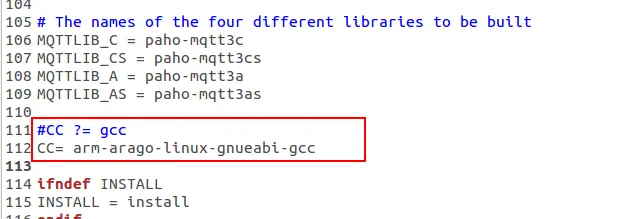1
2
3
4
5
6
7
8
9
10
11
12
13
14
15
16
17
18
19
20
21
22
23
24
25
26
27
28
29
30
31
32
33
34
35
36
37
38
39
40
41
42
43
44
45
46
47
48
49
50
51
52
53
54
55
56
57
58
59
60
61
62
63
64
65
66
67
68
69
70
71
72
73
74
75
76
77
78
79
80
81
82
83
84
85
86
87
88
89
90
| #include "stdio.h"
#include "stdlib.h"
#include "string.h"
#include "src/MQTTClient.h"
#include <sys/time.h>
#include <termios.h>
#include <iostream>
#define ADDRESS "tcp://localhost:1883"
#define CLIENTID "ExampleClientPub"
#define TOPIC "MQTT Examples"
#define PAYLOAD "Hello World!"
#define QOS 1
#define TIMEOUT 10000L
using namespace std;
int main(int argc, char* argv[])
{
MQTTClient client;
MQTTClient_connectOptions conn_opts = MQTTClient_connectOptions_initializer;
MQTTClient_message pubmsg = MQTTClient_message_initializer;
MQTTClient_deliveryToken token;
MQTTClient_message *receivemsg = NULL ;
char* topicName_rev = NULL;
int topicLen_rev;
int rc;
int i;
MQTTClient_create(&client, ADDRESS, CLIENTID,
MQTTCLIENT_PERSISTENCE_NONE, NULL);
conn_opts.keepAliveInterval = 60;
conn_opts.cleansession = 1;
if ((rc = MQTTClient_connect(client, &conn_opts)) != MQTTCLIENT_SUCCESS)
{
printf("Failed to connect, return code %d\n", rc);
exit(-1);
}
pubmsg.payload = (void *)PAYLOAD;
pubmsg.payloadlen = strlen(PAYLOAD);
pubmsg.qos = QOS;
pubmsg.retained = 0;
MQTTClient_subscribe(client, "test", 1);
usleep(10000);
MQTTClient_publishMessage(client, TOPIC, &pubmsg, &token);
printf("Waiting for up to %d seconds for publication of %s\n"
"on topic %s for client with ClientID: %s\n",
(int)(TIMEOUT/1000), PAYLOAD, TOPIC, CLIENTID);
rc = MQTTClient_waitForCompletion(client, token, TIMEOUT);
printf("Message with delivery token %d delivered\n", token);
for(;;)
{
if(MQTTClient_isConnected(client) == true)
{
printf("alive \n");
}else{
printf(" no alive \n");
break;
}
rc = MQTTClient_receive(client,&topicName_rev, &topicLen_rev, &receivemsg,5000);
if(rc == MQTTCLIENT_SUCCESS)
{
printf("Message REv %d delivered\n", rc);
printf("topicName: %s topicName_LEN: %d \n", topicName_rev,topicLen_rev);
if(topicName_rev != NULL)
{
printf("topicName: ");
for(i=0;i<topicLen_rev;i++)
{
printf(" %c ", topicName_rev[i]);
}
printf("\n");
printf("Data: %s len:%d msgid: %d \n",(char *)receivemsg->payload,receivemsg->payloadlen,receivemsg->msgid);
if(strcmp((char *)receivemsg->payload,"ESC") == 0)
{
printf("ESC \n");
break;
}
}
}
usleep(10000);
usleep(100000);
}
MQTTClient_disconnect(client, 10000);
MQTTClient_destroy(&client);
return rc;
}
|










